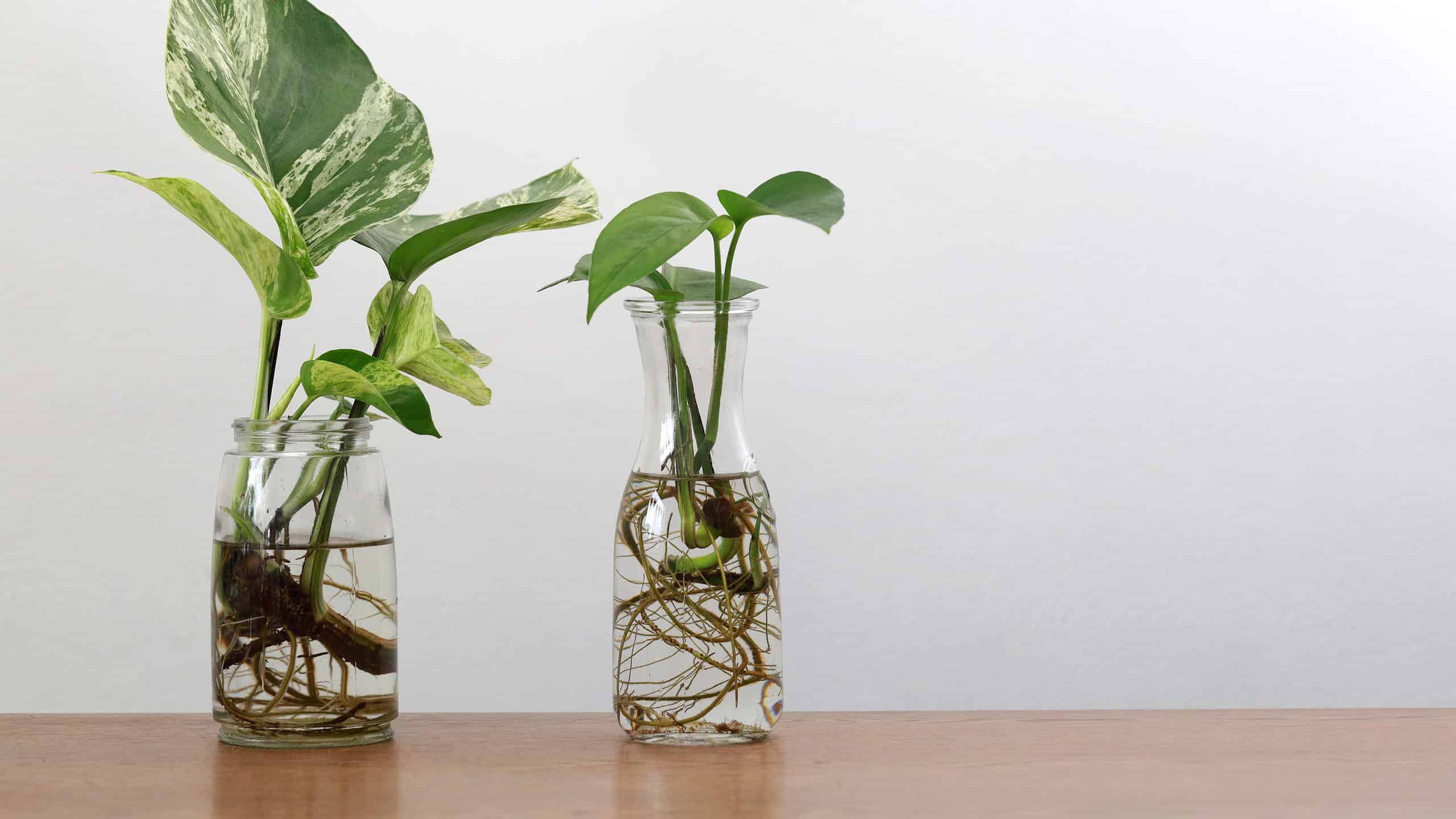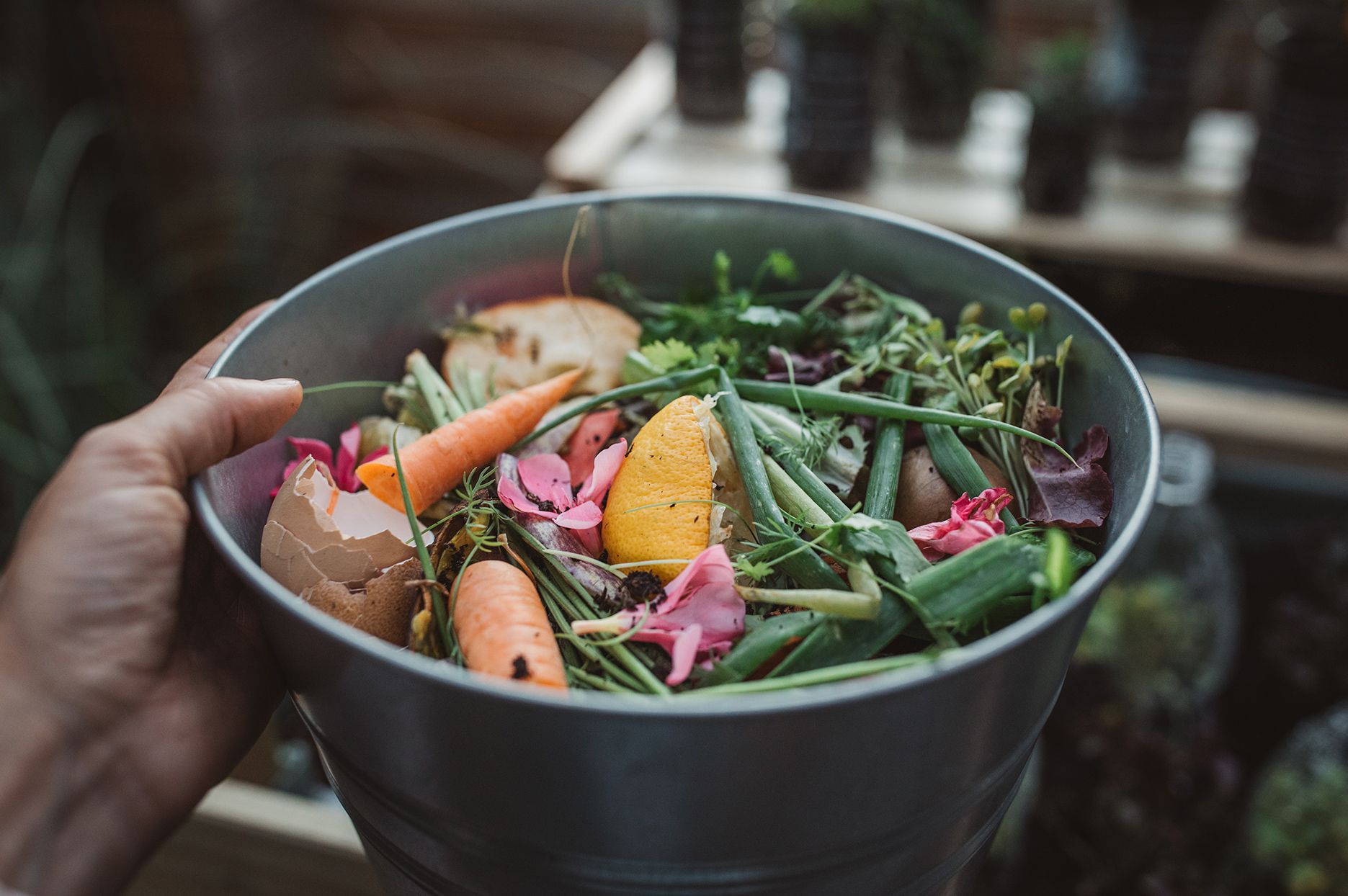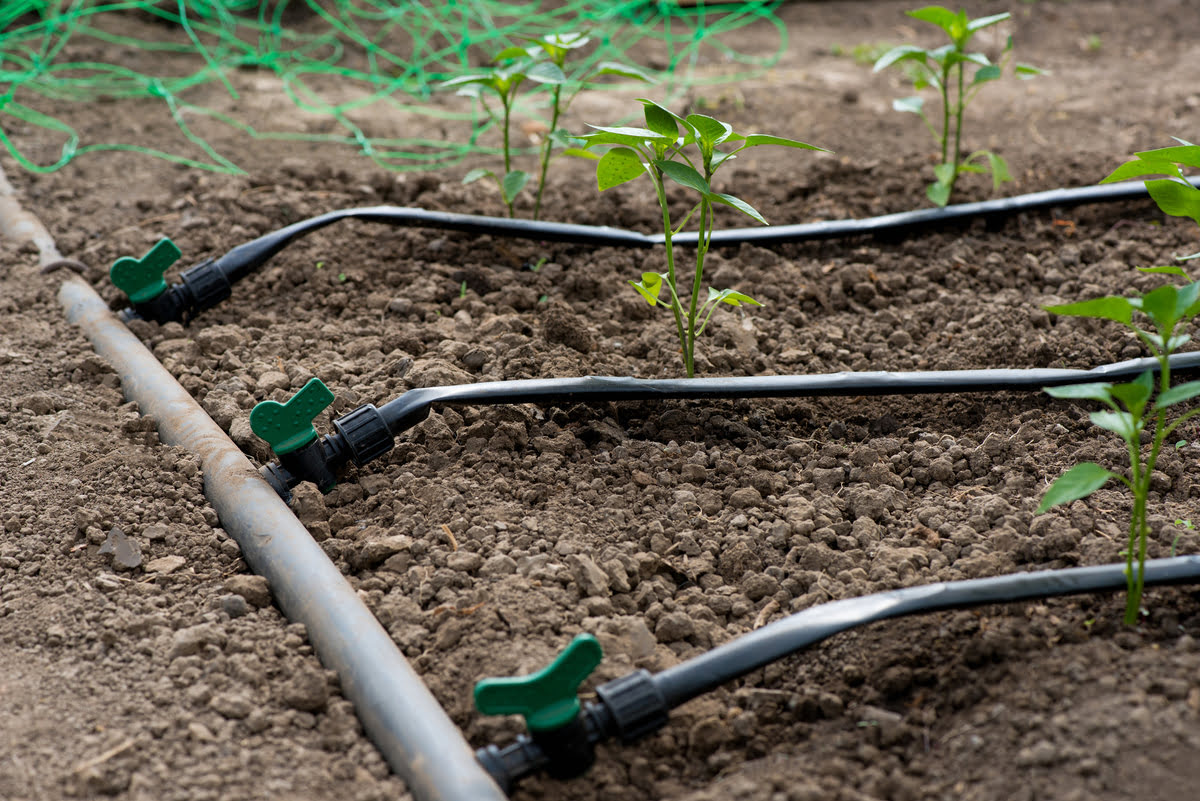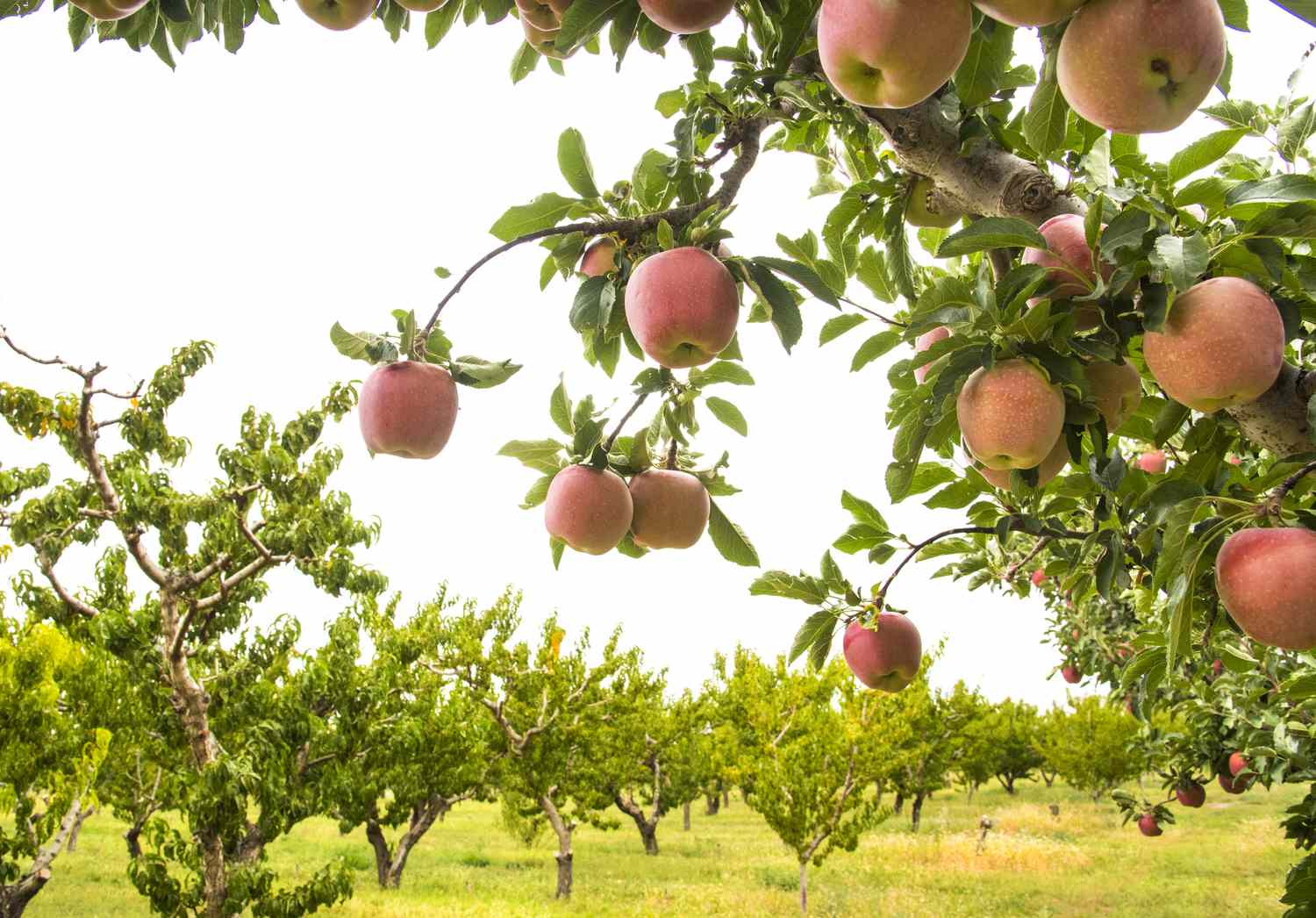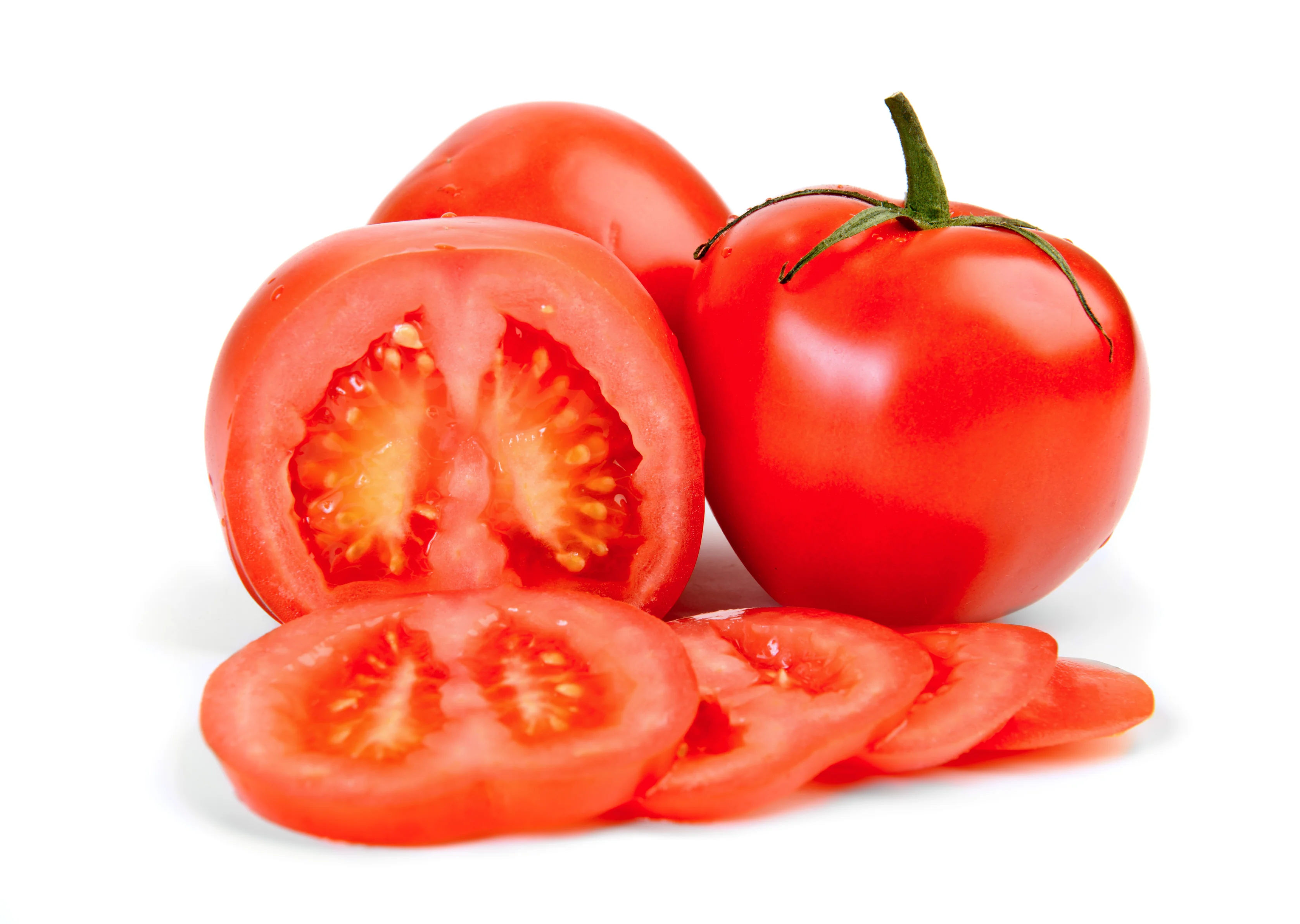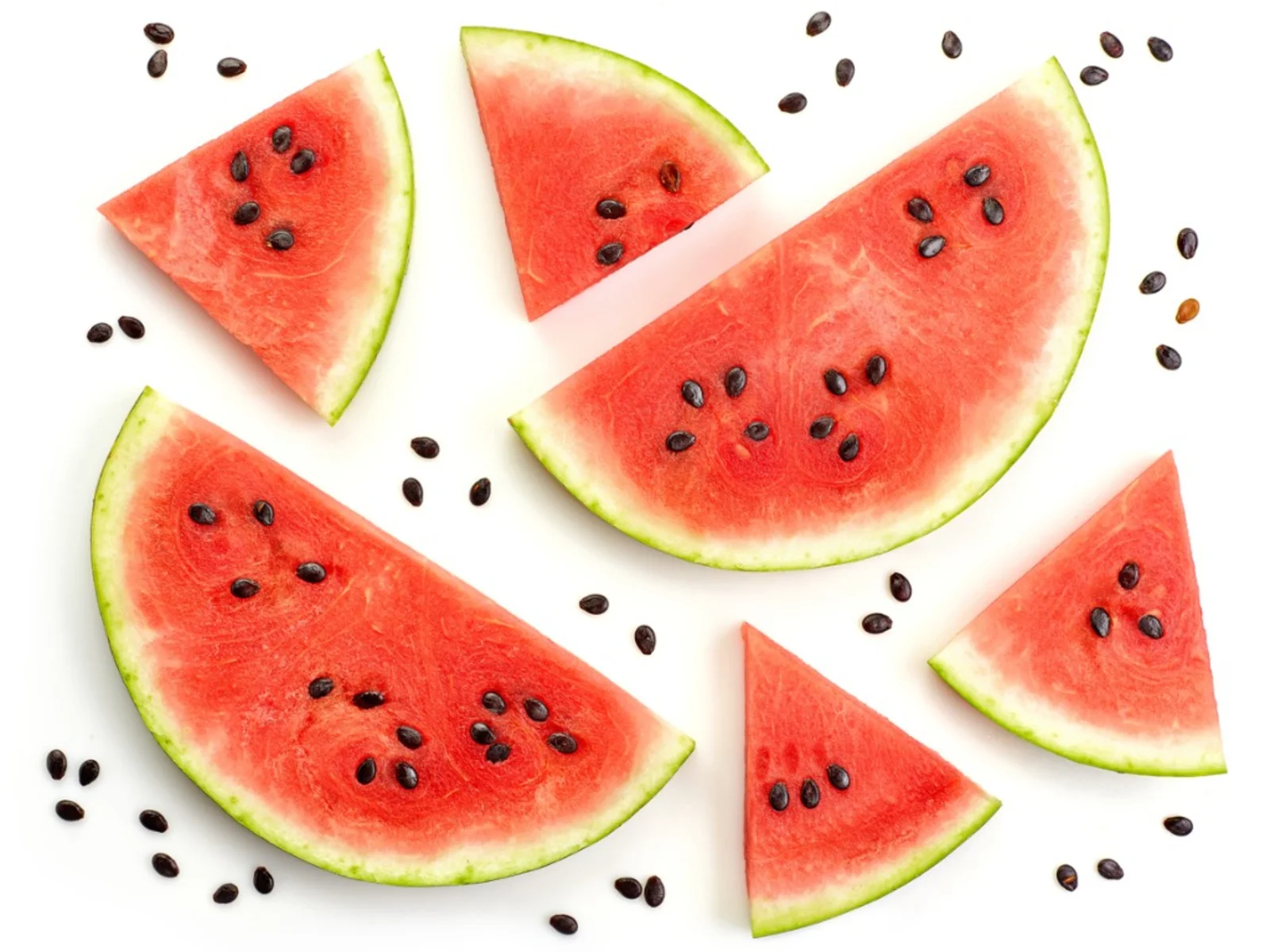Home>Gardening Basics>Getting Started>What Is The First Thing You Should Do Before Planting
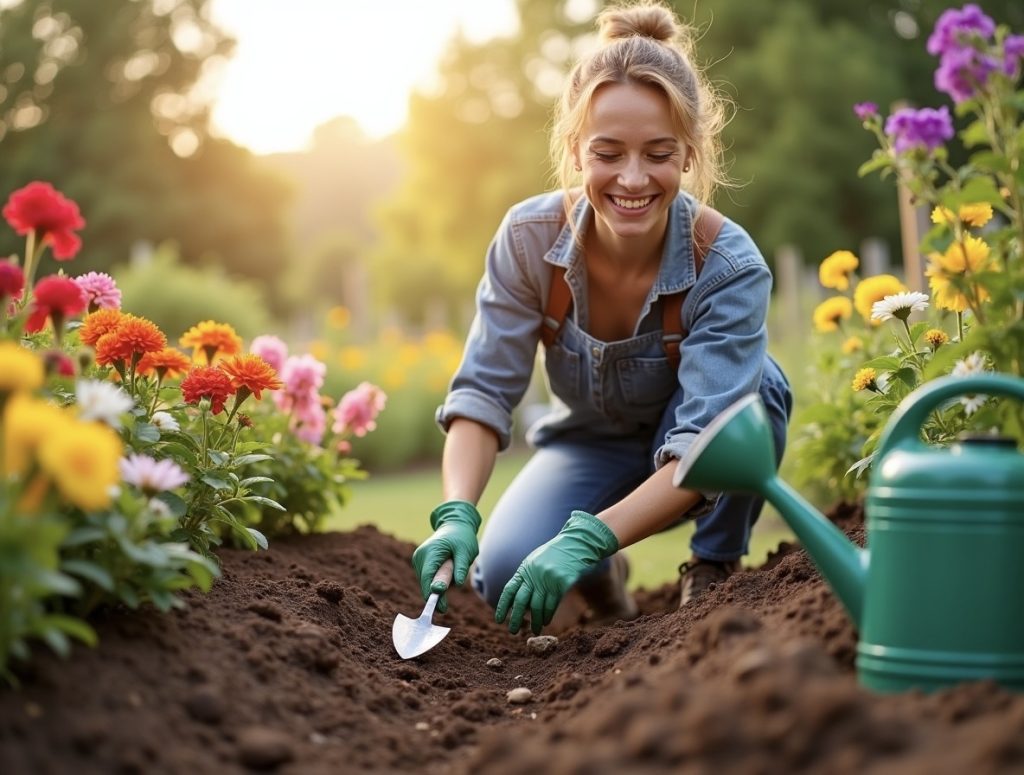

Getting Started
What Is The First Thing You Should Do Before Planting
Modified: January 22, 2024
Before planting, the first thing to do is getting started. Learn the necessary steps and preparations to ensure successful plant growth.
(Many of the links in this article redirect to a specific reviewed product. Your purchase of these products through affiliate links helps to generate commission for Chicagolandgardening.com, at no extra cost. Learn more)
Table of Contents
Introduction
Welcome to the wonderful world of gardening! Whether you are a seasoned green thumb or a complete beginner, embarking on a new gardening project is an exciting and rewarding endeavor. However, before you rush out and start planting, there are a few crucial steps you need to take to ensure the success of your garden.
Gardening is more than just digging a hole and sticking a plant in it. It requires careful planning, preparation, and a thorough understanding of the environment in which you will be growing plants. By taking the time to follow some essential steps before planting, you can set yourself up for a bountiful and thriving garden.
In this article, we will discuss the first thing you should do before planting and delve into the crucial steps that will help you lay a solid foundation for your garden’s success. From understanding your climate to selecting the right plants, we will cover everything you need to know to get started on the right foot.
So, without further ado, let’s dig in and uncover the first step you need to take before getting your hands dirty in the soil!
Understand Your Climate
One of the first and most crucial steps before planting is to understand your climate. Each region has its own unique climate conditions, including variations in temperature, rainfall, humidity, and frost dates. By understanding the specific characteristics of your climate, you can make informed decisions when it comes to plant selection and timing.
Start by researching your hardiness zone, which is a geographical area defined by temperature ranges. Hardiness zones provide valuable information about the plants that are capable of thriving in your area. You can easily find your zone by referring to the USDA Hardiness Zone Map or contacting your local gardening extension office.
Once you know your hardiness zone, consider other climatic factors such as the average annual rainfall and the length of your growing season. Some plants, like succulents, thrive in arid climates with minimal rainfall, while others, like tropical plants, require high humidity and abundant rainfall.
Familiarize yourself with your area’s average frost dates as well. Frost can be detrimental to many plants, so it’s essential to know when to expect the last spring frost and the first fall frost. Armed with this information, you can plan your planting schedule accordingly and avoid planting sensitive crops too early or leaving them exposed to frost in the late fall.
Another critical aspect of understanding your climate is assessing the microclimates within your garden. Microclimates are small-scale variations in temperature, moisture, and light levels influenced by factors such as topography, proximity to buildings, and the presence of trees or other structures. Identifying these microclimates can help you strategically place plants in different areas of your garden to optimize their growing conditions.
Keep in mind that climate conditions may fluctuate from year to year, so it’s essential to stay attuned to any changes and adapt your gardening practices accordingly. Pay attention to weather patterns, and take note of any extreme events such as heatwaves or heavy rainfall. By continuously monitoring your climate, you can make informed decisions and give your plants the best chance for success.
Choose the Right Location
When it comes to gardening, location is everything. Choosing the right location for your garden is crucial for the health and productivity of your plants. Here are some factors to consider when selecting the ideal spot:
Sunlight: Most plants require ample sunlight to thrive. Observe the area throughout the day to determine how much sunlight it receives. Full sun refers to at least six hours of direct sunlight, while partial shade refers to areas that receive a few hours of direct sunlight but are shaded for the rest of the day. Select plants that match the sunlight conditions of your chosen location.
Water drainage: Ensure that the site you choose has good water drainage. Plants that sit in waterlogged soil are prone to root rot and other diseases. Avoid low-lying areas that tend to retain water or consider implementing drainage solutions such as raised beds or installing drainage pipes.
Proximity to water source: It’s essential to have easy access to a water source when establishing a garden. Consider the distance between your chosen location and available water sources, such as outdoor faucets or rain barrels. This will make watering your plants more convenient and efficient.
Soil quality: Assess the quality of the soil in the area you plan to use for your garden. It should be well-draining, nutrient-rich, and suitable for the plants you wish to grow. Conducting a soil test can provide valuable insights into the pH level and nutrient composition of your soil, allowing you to make any necessary amendments to optimize plant growth.
Proximity to structures: Take into account the proximity of nearby structures such as buildings, fences, or trees. Structures can cast shade or create wind patterns that may affect plant growth. Ensure that your garden receives adequate airflow and is not overshadowed by tall structures that can block sunlight.
Accessibility: Consider how accessible your garden will be for maintenance tasks such as weeding, watering, and harvesting. A convenient location will encourage regular care and make gardening a more enjoyable experience.
Space and future expansion: Evaluate the available space in your chosen location and plan accordingly. Determine if the area will accommodate the number of plants you want to grow, or if you may need to expand or use containers for additional planting.
By carefully considering these factors and choosing the right location, you can create an optimal environment for your plants to thrive and grow to their full potential.
Test Your Soil
Testing your soil is a crucial step in preparing for successful gardening. The composition and pH level of your soil play a significant role in plant growth and nutrient uptake. By testing your soil, you can determine its current condition and make any necessary amendments to create an ideal environment for your plants.
There are various methods to test soil, ranging from DIY kits to professional laboratory testing. DIY soil testing kits are readily available at garden centers or can be ordered online. These kits usually include test strips or vials that you fill with soil and then add reagents to determine the pH level and nutrient content of your soil.
When conducting a soil test, pay attention to the following factors:
- pH level: Soil pH is a measure of its acidity or alkalinity. Most plants prefer a slightly acidic to neutral soil pH, typically between 6.0 and 7.0. Knowing the pH of your soil enables you to adjust it with amendments, such as adding lime to raise the pH or sulfur to lower it.
- Nutrient levels: Soil testing also reveals the presence and availability of essential nutrients like nitrogen, phosphorus, and potassium, as well as secondary and micronutrients like calcium, magnesium, and zinc. Based on the test results, you can add fertilizers or organic matter to address any nutrient deficiencies.
- Organic matter content: Testing your soil can also provide insights into the organic matter content. Organic matter improves soil structure, moisture retention, and nutrient-holding capacity. If your soil lacks organic matter, you can amend it with compost, aged manure, or other organic materials.
- Contaminant testing: In some cases, it may be necessary to test your soil for contaminants such as heavy metals or chemical residues. This is particularly important if you plan to grow edible crops or are concerned about the safety of your garden. Contact your local extension office or a reputable soil testing laboratory for guidance on specific contaminant testing.
By performing a thorough soil test, you can gather valuable information about the condition of your soil and its suitability for growing plants. Armed with this knowledge, you can take appropriate measures to amend the soil and create an optimal growing environment.
Prepare Your Soil
Preparing your soil is a crucial step in setting the stage for a thriving garden. By providing the right conditions for plant growth, you can promote healthy root development and maximize nutrient absorption. Here are some essential steps to prepare your soil:
Clear the area: Begin by clearing the area of any debris, weeds, or rocks. Remove any existing vegetation, as it can compete with your plants for nutrients and water.
Loosen the soil: Use a garden fork or tiller to loosen the soil. This process helps break up compacted soil and improves aeration, allowing roots to penetrate more easily.
Add organic matter: Incorporating organic matter into your soil is crucial for enhancing its fertility and structure. Spread a layer of compost, well-rotted manure, or leaf mold over the soil and mix it in thoroughly. Organic matter improves drainage, promotes nutrient retention, and encourages beneficial microbial activity.
Amend pH and nutrients: Based on your soil test results, you may need to adjust the pH and nutrient levels. Add any necessary amendments, such as lime or sulfur to modify the pH, and apply fertilizers or soil supplements to address any nutrient deficiencies.
Perform a final soil check: Before planting, give your soil a final check to ensure it has the right texture and moisture content. Squeeze a handful of soil – if it crumbles easily, it is well-draining, but if it forms a muddy ball, it is too wet and may require additional drying or amending.
Create raised beds or improve drainage: If your soil has poor drainage, consider creating raised beds or incorporating organic matter to improve its structure and allow excess water to drain away.
Mulch the soil: Once your soil is prepared and ready for planting, apply a layer of organic mulch, such as wood chips or straw, to help conserve moisture, suppress weeds, and regulate soil temperature.
Remember that soil preparation is not a one-time task. It is an ongoing process that requires regular maintenance and adjustments. Continuously monitor the condition of your soil and make amendments as needed to promote healthy plant growth.
Plan Your Garden Layout
A well-planned garden layout is essential for maximizing space, promoting proper plant growth, and creating an aesthetically pleasing outdoor space. Before diving into planting, take the time to carefully plan your garden layout. Here are some key considerations:
Consider the available space: Assess the size and shape of your garden area. Take note of any existing features such as trees, structures, or pathways. Determine how much space you have and what types of plants and garden elements you want to incorporate.
Arrange plants strategically: Group plants with similar watering and sunlight needs together to ensure optimal growing conditions. Consider the height and spread of plants when deciding where to place them. Avoid overcrowding to prevent competition for resources and hinder airflow.
Design for accessibility: Plan pathways and access points that make it easy to move around and maintain your garden. Consider the width of pathways so that they accommodate tools, wheelbarrows, or mobility aids. Accessibility will ensure that you can tend to your plants and enjoy your garden without any obstacles.
Think about aesthetics: Take into account the visual appeal of your garden. Consider color schemes, textures, and the overall style you want to achieve. Incorporate features like garden ornaments, trellises, or decorative containers to add interest and create focal points.
Include functional elements: Plan for practical elements such as a compost bin, rainwater collection system, or designated area for potting or storing garden tools. These elements will enhance your gardening experience and make tasks more efficient.
Consider seasonal variations: Keep in mind that plants grow and change throughout the seasons. Plan for succession planting by selecting plants with different maturation times or planting crops that can be harvested and replaced as the seasons progress.
Think about companion planting: Consider the concept of companion planting, where certain plants are beneficial when grown together and can help deter pests, improve pollination, or enhance growth. Research compatible plant combinations to create mutually beneficial relationships.
Make a sketch or use gardening software: Create a visual representation of your garden layout by sketching it on paper or using online gardening software. This will help you visualize the placement of plants and structures and make adjustments before digging in.
Remember, garden layouts are adaptable and can evolve over time. Regularly assess the layout’s functionality and aesthetic appeal, and be open to making adjustments as needed. A well-planned garden layout will not only optimize space but also contribute to a beautiful and harmonious outdoor space.
Gather Your Tools and Supplies
Before you begin your gardening journey, it’s essential to gather the necessary tools and supplies. Having the right equipment on hand will make your gardening tasks more efficient and enjoyable. Here are some essential tools and supplies to consider:
Garden Tools: Invest in high-quality garden tools that will withstand regular use. Basic tools include a trowel, garden fork, hand pruners, shears, a hoe, and a rake. These tools will help with tasks such as planting, weeding, pruning, and leveling the soil.
Watering Equipment: Depending on your garden size and water source, consider a watering can, garden hose, sprinklers, or drip irrigation systems. Choose watering equipment that suits your needs and ensures proper hydration for your plants.
Protective Equipment: Protect yourself from the sun, insects, and potential injuries by wearing appropriate protective gear. This may include a wide-brimmed hat, sunscreen, gardening gloves, knee pads, and sturdy footwear.
Soil Amendments and Fertilizers: Based on your soil test results, gather the necessary amendments and fertilizers to improve soil fertility and nutrient levels. This may include compost, aged manure, organic fertilizers, lime, sulfur, or specific soil conditioners.
Seeds and Transplants: Purchase or start seeds indoors for plants that require a longer growing season. Gather a variety of seeds or purchase transplants from a local nursery or reputable supplier. Choose plants that are suitable for your climate and gardening goals.
Mulch and Organic Matter: Consider collecting or purchasing organic mulch materials such as wood chips, straw, or leaves. These will help conserve moisture, suppress weeds, and enrich the soil as they break down over time.
Plant Support Structures: If you plan to grow climbing plants or vegetables like tomatoes and cucumbers, gather trellises, stakes, or cages for support. These structures will help keep your plants upright and promote proper growth.
Garden Supplies: Other supplies that are handy to have include plant labels, gardening twine, garden markers, a garden cart or wheelbarrow, and a compost bin or container for organic waste.
Storage and Maintenance: Keep your tools organized by having a designated storage area or shed. Regularly clean and maintain your tools to extend their lifespan and ensure optimal performance.
Protective Measures: Consider using organic pest control options or protective measures like row covers or netting to safeguard your plants from pests and animals.
By gathering these essential tools and supplies, you can approach your gardening tasks with confidence and efficiency. Remember to take care of your tools, replenish your supplies as needed, and stay organized to make the most of your gardening experience.
Select Your Plants
One of the most exciting aspects of gardening is selecting the plants that will bring your garden to life. When choosing plants for your garden, consider the following factors:
Climate Compatibility: Select plants that are well-suited to your climate. Take into account your hardiness zone, average temperatures, and annual rainfall. Choose plants that can thrive in your specific conditions to ensure their long-term success.
Growing Season: Consider the length of your growing season when selecting plants. Some plants, like cool-season vegetables, need a shorter growing season, while others, like tropical flowers, require a longer season to reach maturity. Align your plant choices with the length of time your area typically experiences frost-free conditions.
Space and Size: Take into account the available space in your garden and the mature size of the plants you choose. Ensure that you have enough room for the plants to grow and spread without overcrowding or shading out other plants.
Soil and Sun Requirements: Different plants have varied soil and sunlight preferences. Some enjoy full sun exposure, while others thrive in partial shade. Consider the specific soil conditions and level of sunlight in your garden and select plants that are compatible with those requirements.
Watering and Maintenance: Evaluate the level of care and maintenance required by different plants. Some plants are low-maintenance and tolerate drought, while others need regular watering or specific care. Choose plants that align with the amount of time and effort you are willing to dedicate to their care.
Function and Purpose: Determine the purpose of your garden, whether it’s to grow vegetables, create a colorful flower bed, attract pollinators, or provide shade and privacy. Select plants that serve the specific function you have in mind and complement the overall design and goals of your garden.
Personal Preferences: Consider your personal preferences when selecting plants. Choose varieties that you find aesthetically pleasing or have sentimental value. Your garden should reflect your tastes and bring you joy as you spend time in it.
Companion Planting: Explore the concept of companion planting to create beneficial plant relationships. Some plants work well together, repelling pests or providing mutual support. By selecting companion plants, you can enhance the health and productivity of your garden.
Take the time to research and learn about the plants you are interested in. Pay attention to their growth patterns, flowering seasons, and specific care requirements. Choosing the right plants for your garden will not only ensure their survival but also result in a beautiful and harmonious space that brings you joy and satisfaction.
Start Seeds or Purchase Transplants
When it comes to adding plants to your garden, you have the option to either start seeds indoors or purchase transplants from a local nursery or garden center. Each method has its advantages, and the choice depends on factors such as your gardening experience, time availability, and the specific plants you wish to grow.
Starting Seeds Indoors: Starting seeds indoors allows you greater control over the growing process and can be an economical option. Here are a few key considerations:
- Timing: Research the recommended timing for starting seeds indoors. Some seeds require an early start, while others can be sown closer to the optimal outdoor planting time. Take into account the seed’s germination period and the time it takes for the plant to mature.
- Supplies: Gather the necessary supplies for starting seeds indoors, including seed trays or containers, seed-starting soil mix, a watering can or spray bottle, and a source of light such as grow lights or a sunny window sill.
- Follow seed packet instructions: Read the instructions on the seed packet carefully. Each plant has specific requirements for seed depth, light exposure, and watering. Follow these instructions to ensure successful germination and healthy seedlings.
- Care and maintenance: Provide proper care to your seedlings by ensuring they receive adequate light, moisture, and ventilation. Monitor their growth and gradually acclimate them to outdoor conditions before transplanting them into the garden.
Purchasing Transplants: If you prefer a more convenient approach or have limited time and space, purchasing transplants can be a viable option. Consider the following:
- Availability: Check with local nurseries or garden centers for availability and selection of transplants. They often carry a wide variety of plants suitable for your specific climate and growing conditions.
- Quality: Inspect the quality of the transplants before purchasing. Look for healthy foliage, strong stems, and well-developed root systems. Avoid plants that appear stressed, yellowing, or root-bound.
- Timing: Plan your purchase based on the optimal planting time for each specific transplant. Consider the local climate and the plant’s tolerance to environmental conditions.
- Transplanting: When bringing transplants home, make sure to handle them with care. Transplant them into the garden following proper techniques, such as digging a suitable hole, gently loosening the root ball, and ensuring proper watering and aftercare.
Both starting seeds indoors and purchasing transplants have their merits, and you can even opt for a combination of both methods. Starting seeds indoors gives you a wider selection of plant varieties and allows for early planting, while purchasing transplants provides convenience and offers faster results. Choose the method that aligns with your preferences and gardening goals.
Follow Planting Instructions
When it comes to planting your chosen plants, following the proper planting instructions is crucial for their successful establishment and growth. Different plants have specific needs and requirements, and understanding these instructions will ensure they get off to the best start. Here are some essential guidelines to follow:
- Read the planting instructions: Carefully read the planting instructions provided on the seed packet or plant label. These instructions will outline the specific needs of the plant, including recommended planting depth, spacing, and any special considerations.
- Prepare the planting hole: Dig a hole that is wide and deep enough to accommodate the plant’s root system. Loosen the soil at the bottom of the hole to promote healthy root growth.
- Water the plant: Before planting, thoroughly water the plant to ensure its roots are well-hydrated. This will help prevent transplant shock and promote healthy establishment in the new environment.
- Remove the plant from its container: Gently remove the plant from its container, being careful not to damage the roots. If the roots are tightly packed, gently loosen them to encourage outward growth.
- Place the plant in the hole: Position the plant in the center of the hole and backfill with soil, making sure the crown or base of the plant is level with the surrounding soil. Avoid planting too deeply, as this can cause stem rot.
- Press soil gently: Once the plant is in place, lightly press the soil around the base to eliminate air pockets and provide stability. Avoid compacting the soil too firmly, as this can hinder water and air circulation.
- Water after planting: Give the newly planted plant a thorough watering to settle the soil and ensure good soil-to-root contact. This will help establish the plant’s roots and promote healthy growth.
- Apply mulch: Consider applying a layer of mulch around the base of the plant, leaving a small gap around the stem. This will help conserve moisture, suppress weeds, and regulate soil temperature.
- Follow up with care: Continuously monitor the newly planted plants and provide regular care and maintenance. This may include watering regularly, applying fertilizers as needed, pruning when necessary, and protecting from pests and diseases.
Remember that different plants may have specific variations in planting instructions, so it’s essential to read and follow the guidelines provided for each individual plant. By following proper planting techniques and instructions, you give your plants the best chance for successful establishment and growth in your garden.
Provide Proper Care and Maintenance
Once you’ve planted your garden, providing proper care and maintenance is essential for the long-term health and success of your plants. Regular attention will help them thrive and produce abundant blooms or harvests. Here are some key aspects of caring for your garden:
- Watering: Water your plants appropriately to ensure they receive adequate moisture without overwatering. Take into account factors such as the plant’s water needs, soil type, and weather conditions. Water deeply and infrequently, allowing the soil to dry slightly between waterings.
- Fertilizing: Feed your plants with the appropriate fertilizers or organic amendments to ensure they receive essential nutrients for growth. Follow the recommended schedule and dosage for the specific plants you’re growing.
- Weeding: Regularly weed your garden to prevent unwanted plants from competing with your desirable plants for nutrients and space. Pull out weeds by hand or use mulch to suppress their growth.
- Pruning: Proper pruning promotes healthy growth and can help shape plants. Remove dead, damaged, or diseased branches. Prune the plants as needed to maintain their shape, improve airflow, and encourage vigorous growth.
- Supporting: Some plants, such as vine crops or tall flowers, may require support to keep them upright. Use stakes, trellises, or cages to provide stability and avoid damage from wind or heavy fruits.
- Pest and Disease Management: Regularly inspect your plants for any signs of pests or diseases. Take appropriate action, such as hand-picking pests, using organic pest control methods, or applying approved insecticides or fungicides when necessary.
- Monitoring and Adjusting: Continuously monitor the health of your plants, observing any changes in growth or appearance. Adjust care practices accordingly, such as watering or fertilizing more or less, based on the specific needs of each plant.
- Harvesting: Harvest fruits, vegetables, or flowers at the appropriate time to enjoy their peak flavor or beauty. Regularly harvest, promote further growth, and prevent plants from becoming overcrowded.
- General Maintenance: Maintain a clean and tidy garden by removing debris, fallen leaves, or spent flowers. Keep garden tools clean and in good condition, and properly store them after use.
Remember, each plant has its own care requirements, so it’s important to research and understand the specific needs of your individual plants. By providing proper care and maintenance, you will create a healthy and thriving garden that rewards you with beautiful blooms, bountiful harvests, and a tranquil outdoor space to enjoy.
Conclusion
Congratulations! You are now armed with the essential knowledge and steps to confidently embark on your gardening journey. By understanding your climate, choosing the right location, testing your soil, preparing it properly, and planning your garden layout, you have set a solid foundation for a successful garden. Gathering the necessary tools and supplies, selecting the right plants, following proper planting instructions, and providing consistent care and maintenance will ensure the health and growth of your garden.
Gardening is a fulfilling and rewarding activity that allows you to connect with nature, nurture living plants, and create a beautiful outdoor space. As you tend to your garden, be patient and observant, recognizing that each plant has its own unique needs and requirements. With time and experience, you will develop a deeper understanding of your garden and become more confident in your gardening skills.
Remember, gardening is a continuous learning process. Explore new plants, experiment with different techniques, and adapt your practices as needed. Embrace the joy and satisfaction that comes from watching your garden flourish and reap the rewards of your efforts.
So, grab your gardening gloves, get your hands dirty, and enjoy the journey of nurturing and growing your very own garden!

